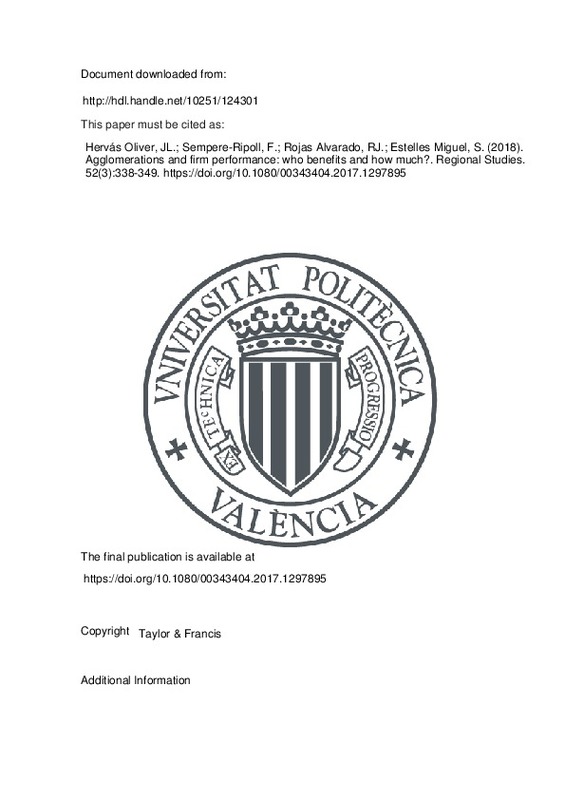JavaScript is disabled for your browser. Some features of this site may not work without it.
Buscar en RiuNet
Listar
Mi cuenta
Estadísticas
Ayuda RiuNet
Admin. UPV
Agglomerations and firm performance: who benefits and how much?
Mostrar el registro completo del ítem
Hervás Oliver, JL.; Sempere-Ripoll, F.; Rojas Alvarado, RJ.; Estelles Miguel, S. (2018). Agglomerations and firm performance: who benefits and how much?. Regional Studies. 52(3):338-349. https://doi.org/10.1080/00343404.2017.1297895
Por favor, use este identificador para citar o enlazar este ítem: http://hdl.handle.net/10251/124301
Ficheros en el ítem
Metadatos del ítem
| Título: | Agglomerations and firm performance: who benefits and how much? | |||
| Autor: | ROJAS ALVARADO, RONALD JOANNY | |||
| Entidad UPV: |
|
|||
| Fecha difusión: |
|
|||
| Resumen: |
[EN] Agglomerations and firm performance: who benefits and how much? Regional Studies. Agglomeration can generate gains. If it does, how does it work and how are those gains distributed across agglomerated firms? The paper ...[+]
|
|||
| Palabras clave: |
|
|||
| Derechos de uso: | Reserva de todos los derechos | |||
| Fuente: |
|
|||
| DOI: |
|
|||
| Editorial: |
|
|||
| Versión del editor: | https://doi.org/10.1080/00343404.2017.1297895 | |||
| Código del Proyecto: |
|
|||
| Agradecimientos: |
|
|||
| Tipo: |
|







![[Cerrado]](/themes/UPV/images/candado.png)


